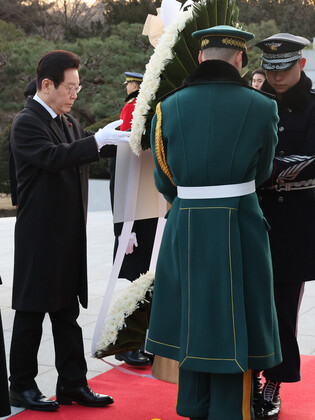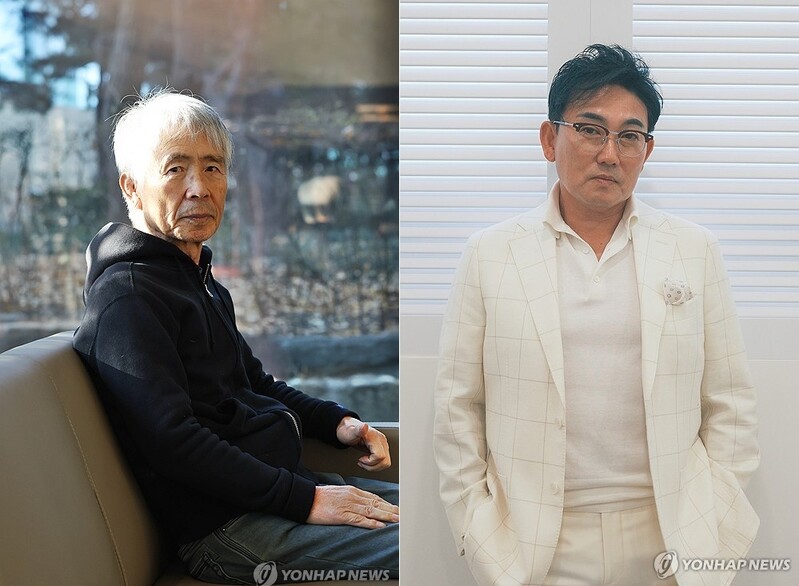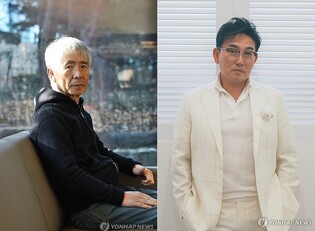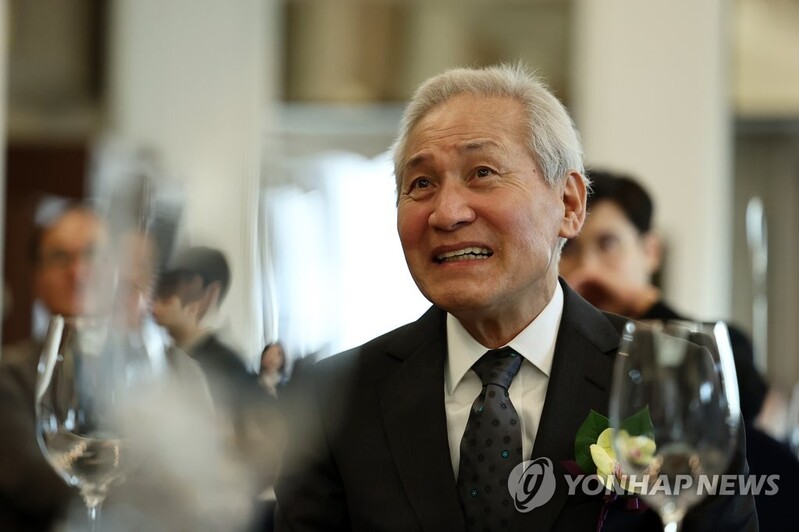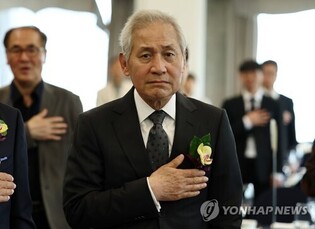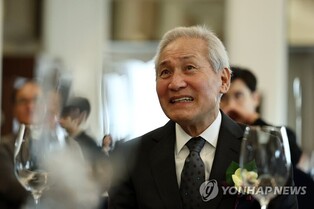* Editor's Note: According to the Korea Foundation's 2024 report, there are nearly 225 million Hallyu (Korean Wave) fans worldwide. With the advent of the "Digital Silk Road," transcending time and space, we are entering the era of "Hallyu 4.0." To help readers gain a fresh perspective on Korean culture and K-culture, the Yonhap News K-Culture Team has prepared a series of expert columns.
Shin Jong-geun's 'K-Liqueur' Story: Wheat Makgeolli and Wheat Soju
Contributed by Shin Jong-geun, exhibition planner and columnist (author of "Art and Liquor")
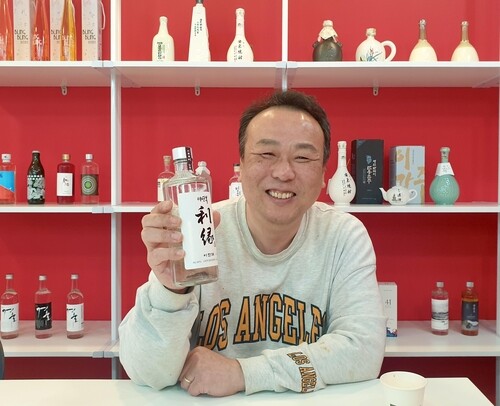
Wheat has traditionally been used as a supplementary grain in Korea and other parts of East Asia. In contrast, it has long been a staple food in the West, standing alongside rice as one of the world’s two major food crops.
Wheat is ground into flour and used for making noodles, bread, pastries, and industrial products. It also serves as a raw material for soy sauce and doenjang (fermented soybean paste), while wheat bran—the residue left after milling—is a valuable feed for livestock.
Korea has a long history of wheat cultivation. Wheat, believed to have been grown between 200 and 100 BCE, was discovered in Mirim-ri, Daedong-gun, Pyeongnam. Wheat has also been found at historical sites such as the Banwol Fortress in Gyeongju and the Baekje military granary ruins on Buso Mountain in Buyeo.
Traces on ancient Chinese pottery suggest that wheat was roughly ground and cooked into a porridge or oatmeal-like dish. However, due to its coarse texture and less appealing taste, it was considered inferior to grains like millet and sorghum.
The same was true in Korea.
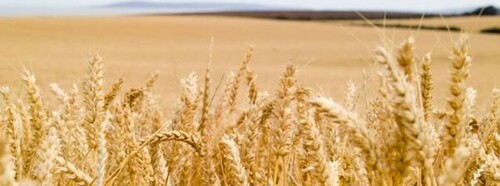 |
| ▲ This wheat image is captured from the 2024 Yangpyeong Wheat Festival website. (PHOTO NOT FOR SALE) (Yonhap) |
Wheat is more resistant to cold than rice and thrives in dry, cool climates. Except for the rainy summer months, Korea’s climate is well-suited for wheat cultivation.
Wheat was typically sown in the dry seasons of spring or autumn and harvested in early summer.
Along with barley, it was referred to as "yangmaek" (兩麥), meaning "the two wheats," and was a key crop. However, unlike China, where wheat was milled using water-powered grinding wheels, Korea primarily used millstones or mortars, making large-scale flour production difficult. As a result, rather than being used for bread or noodles, wheat was mostly steamed for making wheat rice or fermented into nuruk (a fermentation starter for brewing).
After the Korean War, Korea faced a severe food shortage. As a result, wheat was perceived as an obstacle to rice farming due to its limited practical applications. Moreover, the U.S. provided large quantities of cheap American wheat as aid, leading to a decline in domestic wheat cultivation, even as wheat consumption paradoxically increased.
In the 1960s, as Korea struggled with food shortages, the government banned the use of rice in makgeolli production in 1963 to conserve grain supplies.
As a result, inexpensive imported wheat flour became the primary ingredient for brewing makgeolli.
Then, in 1977, following an unprecedented bumper harvest, Korea’s rice production exceeded 40 million seok (a traditional Korean unit) for the first time, and after 14 years, the government lifted the ban on using rice for makgeolli production. However, as rice consumption surged, the ban was reinstated in 1979.
From the 1980s onward, rice production gradually increased while consumption declined. By 1990, rice-based makgeolli was once again permitted, a practice that continues to this day.
Considering this historical background, all makgeolli consumed between the 1960s and 1980s was made from wheat.
Regardless of whether it was considered high-quality or not, people drank wheat makgeolli for nearly 30 years, inevitably becoming accustomed to its taste. When rice makgeolli returned to the market, it felt lighter and less rich compared to the wheat makgeolli people had been drinking.
However, the market quickly shifted toward rice-based makgeolli, and today, wheat makgeolli has become a rare find.
Nevertheless, some breweries continue to produce wheat makgeolli for those who cherish its nostalgic taste or seek new variations of the drink.
Among them are premium wheat makgeolli brands such as Hyangsu, Yangpyeong Wheat Makgeolli, and Milmul Takju, which offer high-quality wheat-based brews.
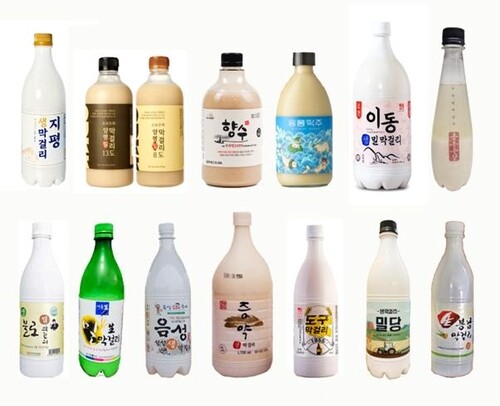 |
| ▲ Photos of commercially available makgeolli made from wheat, screenshot from each maker's websites. (PHOTO NOT FOR SALE) (Yonhap) |
Because wheat was difficult to obtain and expensive, it was also called Jinmal (眞末), meaning "the finest powder." It was often added in small quantities to various dishes and alcoholic beverages. Given its rarity, wheat soju was naturally a high-end liquor that only noble families could afford to brew.
Recently, Maenggae Suldoga (led by CEO Park Sung-ho) successfully revived wheat soju, a traditional liquor from the Andong region that had disappeared over time. The brewery followed the brewing method recorded in Suunjapbang, a historical recipe book from around 1540, and named the soju Jinmaek Soju, as it appeared in the text.
Additionally, Ubou Juchaek (led by CEO Kim Hee-chul) has recently introduced Pyeongmil Soju 53, a spirit made with both rice and wheat. Kim, a former banker with a self-proclaimed 50 years of drinking experience, poured his dedication into crafting this unique soju.
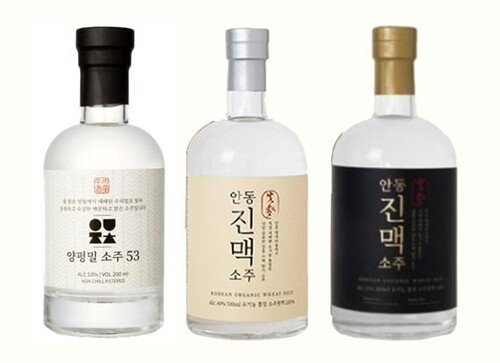 |
| ▲ From left: Yangpyeong Wheat Soju 53 (Ubou Juchaek), Andong Jinmaek Soju 40°, and Andong Jinmaek Soju 53° (Maenggae Suldoga), screenshot from the brewers' website. (PHOTO NOT FOR SALE) (Yonhap) |
For some, wheat makgeolli is a nostalgic drink; for others, it is an entirely new experience. Wheat soju remains a rare and precious liquor.
How about a glass of wheat-based alcohol—for the sake of both nostalgia and new discoveries?
(C) Yonhap News Agency. All Rights Reserved

















